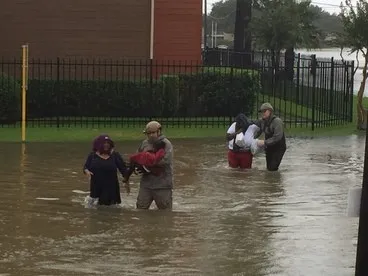Can Snow Removal Damage My Driveway or Lawn?
페이지 정보

본문
Understanding the Impact of De-Icing Chemicals
One of the most common causes of damage during snow removal is the use of de-icing chemicals. While products like rock salt (sodium chloride) and calcium chloride are effective at melting ice, they can be harsh on driveways and lawns. These chemicals can seep into the surface of your driveway, leading to cracks and erosion over time, particularly if the driveway is made of concrete. On lawns, de-icing chemicals can cause "salt burn," which damages the grass and other vegetation, leading to brown patches and weakened root systems.
 Physical Damage from Snow Removal Equipment
Physical Damage from Snow Removal EquipmentSnow removal equipment, such as snow blowers, shovels, and plows, can cause physical damage to driveways and lawns if not used correctly. Metal blades on shovels or snow blowers can scrape and gouge the surface of your driveway, especially if the equipment is not properly maintained or adjusted. Plows, in particular, can be damaging if the blade is set too low, potentially tearing up sections of lawn or scraping away the top layer of your driveway. To avoid this, ensure that the equipment is in good condition and that the blades are set at the correct height.
The Risk of Freeze-Thaw Cycles
The freeze-thaw cycle is a natural process that occurs when temperatures fluctuate above and below freezing. Water from melted snow can seep into small cracks in your driveway, and when it freezes again, it expands, causing the cracks to widen and potentially leading to more severe damage. This cycle can be exacerbated by the use of de-icing chemicals, which increase the amount of water on the surface. To minimize damage, clear snow and ice promptly and consider sealing your driveway before winter to protect it from water infiltration.
Protecting Your Lawn During Snow Removal
Lawn damage during snow removal is often caused by the mechanical force of shovels, snow blowers, or plows. Repeatedly pushing heavy snow onto the lawn can compact the soil and damage the grass underneath. Additionally, piling snow on the lawn can lead to excessive moisture, which may suffocate the grass or encourage the growth of mold and mildew. To protect your lawn, avoid piling snow in one area, and try to distribute it evenly. Consider using a snow blower or shovel with a plastic blade, which is less likely to cause damage than metal alternatives.
Preventing Damage to Pavers and Asphalt
Driveways made of pavers or asphalt are also susceptible to damage during snow removal. Pavers can shift or crack under the pressure of heavy snow removal equipment, particularly if the ground beneath them is not properly prepared. Asphalt driveways, while more flexible than concrete, can still suffer from cracks and surface damage, especially if exposed to harsh chemicals or heavy mechanical force. To protect these surfaces, use a broom or plastic shovel to clear snow whenever possible, and avoid using metal blades or harsh chemicals.
Minimizing Damage with Proper Technique
The key to minimizing damage during snow removal lies in using the right technique. For driveways, start by clearing the snow as soon as possible after it falls to reduce the risk of ice formation and freeze-thaw cycles. When using a shovel or snow blower, work in layers rather than trying to remove all the snow at once, which reduces the strain on the surface. For lawns, avoid using heavy machinery near the edges, and take care not to dig into the grass. Always be mindful of where you pile snow, as large accumulations can cause damage over time.
Choosing Safer De-Icing Alternatives
To reduce the risk of damage from de-icing chemicals, consider using alternative products that are less harmful to driveways and lawns. Sand, for example, provides traction without causing chemical damage, though it does not melt ice. Other eco-friendly de-icing products include calcium magnesium acetate or beet juice-based solutions, which are effective at lower temperatures and less damaging to the environment. These alternatives can help you keep your driveway and lawn safe without the negative side effects of traditional salts.
Conclusion
While snow removal is necessary for maintaining safe and accessible outdoor spaces during winter, it can lead to damage if not done carefully. By understanding the risks associated with de-icing chemicals, snow removal equipment, and freeze-thaw cycles, you can take steps to protect your driveway and lawn. Using proper techniques, safer de-icing alternatives, and ensuring your equipment is well-maintained will help minimize damage and keep your property in good condition throughout the winter season.
FAQs
What are the best ways to prevent driveway damage during snow removal?
• To prevent driveway damage, avoid using metal shovels or snow blowers with metal blades. Clear snow promptly to reduce freeze-thaw cycles and consider sealing your driveway before winter to protect it from water infiltration.
How can I protect my lawn from damage while removing Snow Removal In Denver?
• Protect your lawn by using a plastic shovel or snow blower, avoiding heavy machinery near the edges, and distributing snow evenly to prevent compaction and excess moisture.
Are there eco-friendly alternatives to traditional de-icing chemicals?
• Yes, eco-friendly alternatives include sand for traction, calcium magnesium acetate, and beet juice-based de-icers. These options are less harmful to driveways and lawns compared to traditional salts.
Can snow removal equipment damage pavers or asphalt?
• Yes, pavers can shift or crack under heavy equipment, and asphalt can suffer from cracks and surface damage. Use brooms or plastic shovels for clearing snow to minimize the risk.
What should I do if my driveway or lawn gets damaged during snow removal?
• If damage occurs, repair cracks in the driveway as soon as possible to prevent further deterioration. For lawns, reseed or patch damaged areas in the spring to restore healthy grass growth.
- 이전글Hollywood Is Your Worst Enemy. 9 Ways To Defeat It 24.08.22
- 다음글Stable Causes To Avoid High Stakes Sweeps 24.08.22
댓글목록
등록된 댓글이 없습니다.


 블로그체험단 바로가기
블로그체험단 바로가기